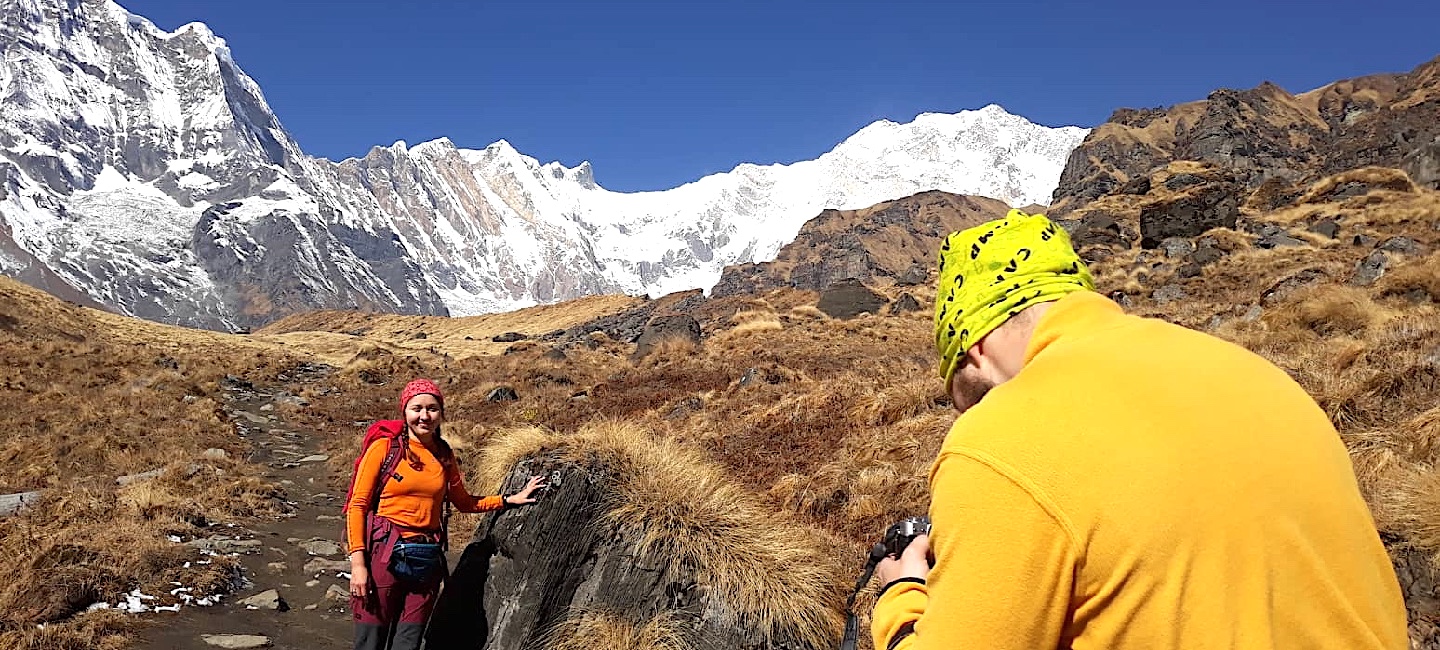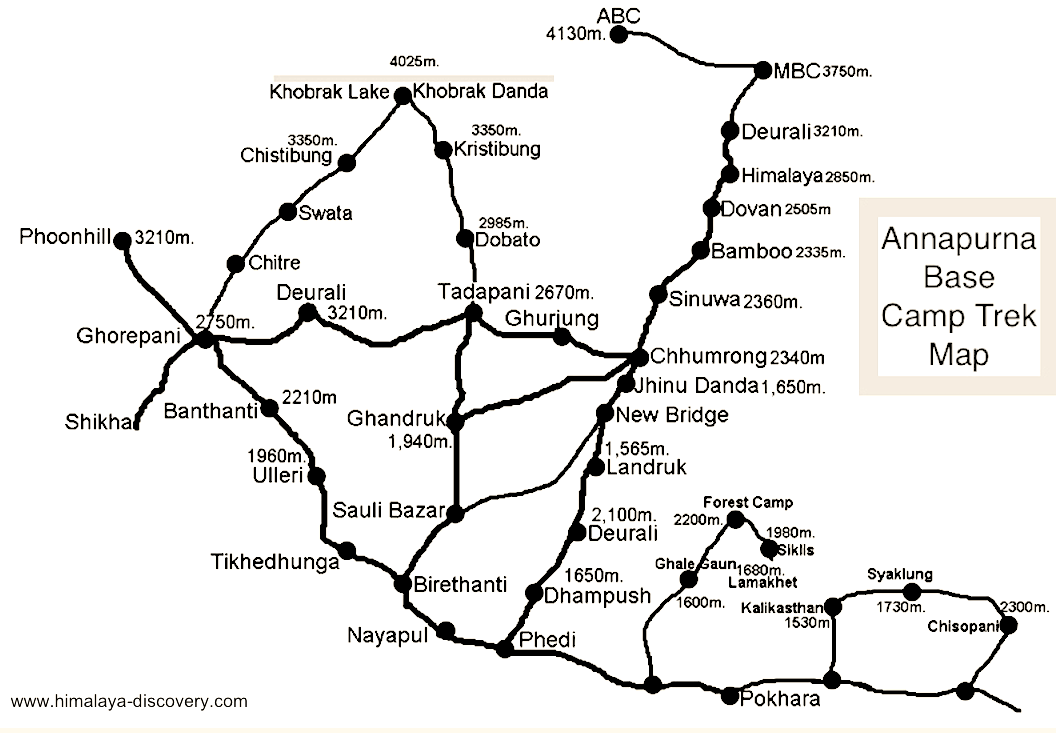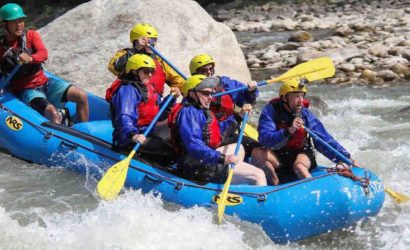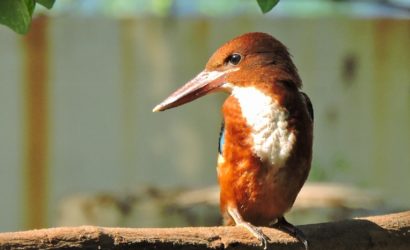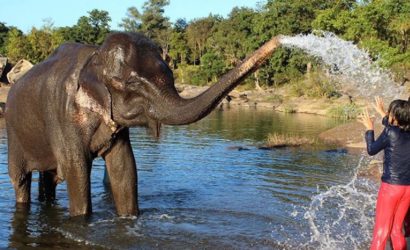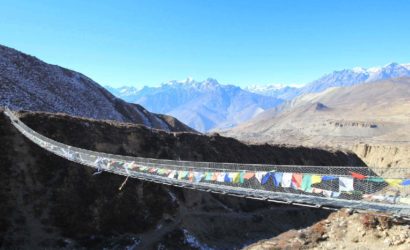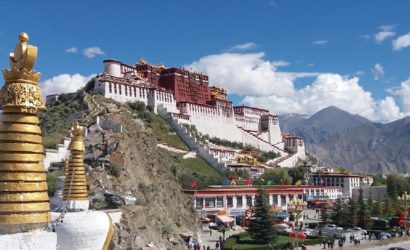The Annapurna Base Camp Trek is one of the most popular trekking regions in Nepal. This Annapurna base camp trek 10 days itinerary takes you right into the heart of the Annapurna mountains and returns via a small circuit route that delivers amazing mountain views on the northward and returning southward leg of the journey.
The highlights of the trek are the spectacular Annapurna Base Camp/Annapurna Sanctuary, where you will be surrounded by the western peaks of the great Annapurna range including Machapuchare (fishtail), Ganagapurna, Annapurna South, Annapurna 1, Hiunchuli and more, all arranged almost precisely in a circle about 15 kilometers in diameter with a deep glacier-covered amphitheater at the center. So, if you want to experience the best trekking in the Nepalese Himalaya Mountains within 10 days led by the Sherpa-guide this is the right trek for you.
Annapurna Base Camp Trek: Highlights
- Trek into the heart of the Annapurnas, surrounded by peaks of 6000-8000 meters.
- Unobstructed views of Annapurna South, Hiuchuli, Annapurna I, Gangapurna, Annapurna range and Machapuchhare.
- Discover rhododendron forests and tiny hamlets.
- Indulge in the natural hot spring in Jhinu to help relax your tired muscles, experience teahouse lodges and high passes.
- Discover the charming Gurung and Magar culture and lifestyles.
People & Culture
The route of the Annapurna Base Camp is mixed with ethnic groups; Chhetris and Brahms are in the lower elevations and Mongoloids. Mostly people from Gurungs and Magars in the area, famous for the Gurkha regiment. In the evening, some places offer local cultural shows that are great to see and you can also participate!
Best Time to Trek Annapurna Base Camp
Nepal is good for trekking throughout the year. Nepal’s climate is maritime and has four different seasons. The autumn season is the most famous trekking season in the Annapurna region of Nepal. It has beautiful, cool, blue skies, clear weather conditions and amazing views of the white mountains and the countryside.
The spring season will be in a second. This time of year offers a magnificent picturesque view of the rhododendron flowers and the lush forests. Autumn falls in September and October and spring falls in April, May.
Getting Annapurna Base Camp
Except for the Annapurna Circuit, most of the Annapurna treks start and end in Pokhara, the second largest city in Nepal and naturally blessed place to relax after the big walk in the Annapurna. The distance from Kathmandu is 200 km west.
There are several daily flights from Kathmandu to Pokhara, cost 125 USD per person. Tourist buses leave from and to Pokhara every morning, approximately 7 hrs drive. Local buses leave from Kathmandu every hour until 3 pm.
Annapurna Base Camp Trek Itinerary
Annapurna Base Camp (ABC) Trek itinerary will be 8 to 12 days, except your arrival and departure days and depending on the duration of your holiday time and level of your physical fitness.
Starting point Nayapul – Ghandruk – Chhomrong – Dovan – Himalaya – Deurali and up to Base Camp and back to the Nayapul same way along the Modi khola river is the shortest itinerary. This 10 days ABC trek itinerary is for relaxing and comfortable trekkers. We also offer tailor-made trek to Annapurna Base Camp as your desires!
Annapurna Base Camp Trek Difficulty
The difficulty of this Annapurna Base Camp trek, it is very moderate and doesn’t demand advanced levels of physical fitness so that anyone can do this trek with physically fit people. This trek is recommended those who are traveling with their children.
The trek route of Annapurna has multiple options to reach to the Base Camp. You can have easy walking of 5 to 6 hours a day in relaxing way by visiting the popular places on the route or you can trek to the base camp in short cut way.
The trekking can be complete within 8 days to 12 days. So, we have 10-day Annapurna Base Camp Trek, 12-day Annapurna Base Camp Trek and 8-day Annapurna Base Camp Trek itineraries. The highest point we will reach is 4130 meters from sea level.
The Ultimate Annapurna Base Camp Trek Packing List:
You are going to be trekking for 4 to 6 hours a day. 1. Base Layer 2. Trekking Shirts 3. Trekking Trousers and Shorts. 4. Fleece Jacket 5. Insulated Jacket 6. Hard Shell Jacket and Rain Gear 7. Sun Protection Hat 8. Trekking Backpacks 9. Camera Gear and Accessories 10. Hiking Boots and Socks 11. Jackets and Other Outerwear 12. Long Underwear and Base Layers 13. Gloves, Hats, and Rain Gear Other Essentials
Annapurna Base Camp Trek Cost?
Annapurna Base Camp Trek cost we have offered on USD 875, the trek price is based on two persons. If you are traveling solo it costs USD 150 extra.
Cost Includes transport from KTM – Pokhara – KTM, permits, accommodation, meals but costs do not include your insurance, visa, personal equipment, drinks etc.
The advantage of booking a package trek to Annapurna Base Camp is that everything is taken care of for you. Accommodation will be booked ahead, meals will be paid for and arranged. You should get to meet your guide before the trek.
The price will vary according to group size, budget, standard and deluxe trek plan. We will provide 2 nights hotel accommodation in Pokhara with breakfast in twin sharing occupancy basis.
You will arrive at Kathmandu where we will pick you up from the airport and drop you to your hotel. Meanwhile, you can take your time to stroll around to visit the temples and monuments.
There are plenty of places that you will find fascinating, if you wander around. There will also be a trip briefing today with gear check. Overnight in Kathmandu.
Your guide will pick you up at 6:30 am from the hotel and take you to the tourist bus station. The bus leaves to Pokhara at about 7:30 am. Also known for its panoramic views of Annapurna and Machapuchare (Fishtail) in the north, Dhaulagiri in the west and Lamjung Himal and Manaslu in the south, Pokhara is a lovely valley on the banks of the Fewa Lake. It’s lower than Kathmandu and much less hectic, making it the ideal starting point for your journey. Overnight at hotel in Pokhara.
Ghandruk is a beautiful Gurung village, we start with a taxi ride for 2 hours around to Nayapul from Pokhara. The trail first drops down to Birethanti, crossing the suspension bridge over the Bhurungdi River. Birethanti is a beautiful village, Initially the trail winds along the Modi River and the trail is flat up till Syauli Bazaar. Leaving the river bank, we then hike on a winding path till Kimche. From Kimche, the trail further ascends towards Ghandruk crossing Chane. Overnight at guesthouse.
After breakfast, climb up for an hour up to Ghandrukkot and then a steep descent takes us to the Kimrong Khola. After another steep ascent from Kimrong Khola, we make an hour of easy walk. Then we take a steep climb continuing up to Chhomrong. Towering above the village is the mighty peak of Annapurna South, with the Fishtail Mountain (Machhapuchhare) facing it across the valley. Chhommrong is a beautiful village located on the lap of giant Annapurna massif. Overnight at guesthouse.
Today the trail drops down to the Chhomrong Khola and again we continue climbing to Khuldighar at 2380 meters where there used to be an ACAP (Annapurna Conservation Area) Check post. There is a clearing in the forest a little further on, from which, the route travels very steeply down a rock bank then levels out, running through thickets of bamboo at the bottom of the gorge, keeping always on the west side of the river. Overnight at guesthouse.
A short walking day today because of the altitude and risk of snow avalanches in the area that we need to cross in the next morning. Our day begins with the climb through bamboo, then rhododendron forests to Himalayan Hotel and on to Hinko cave. The accommodation will be in Deurali, on the ridge above Hinko is the stretch of trail that is most subject to avalanche. Overnight at guesthouse.
Today the trail climbs on past the Machhapuchhare Base Camp, which isn’t really a base camp since climbing the mountain is not permitted. Since it is totally surrounded by mountains, this area is known as the Annapurna Sanctuary. Two hours trek from Machhapuchhare Base Camp takes you to the Annapurna Base Camp (ABC) at elevations of 4130 meters. From here, you will see unobstructed views of mountain scenery, which is very spectacular. Overnight at guesthouse.
Wake up in the early morning to see the best of the morning sunrise as it spreads its rays over the countless icy peaks and the valley that surrounds us. On the way to Annapurna Base Camp from Machhapuchhre Base Camp the scrubby vegetation fades to just a little grass and lots of rock, snow and ice depending upon the season.
We are now in the very heart of the Annapurna Sanctuary as the valley widens under the grinding power of the glacier. The multi-summit mountain wall of Annapurna South (7,219m) to Annapurna I (8,091m) now towers in front of us. We stand in a snowy mountain caldron of unmatched natural beauty. Take your time to soak in the scenery and take lots and lots of photos.
Your guide will point out the main mountain peaks and the routes brave climbers have followed to reach their summit. But the eventually we must depart and commence our return down the glacier valley. The descent will be much faster than our ascent and we will end the day at the village of Sinuwa not far from Chhommrong. Overnight at guesthouse.
The trek down from Sinuwa to Siwai goes through the beautiful villages of Chommrong, Jhinu, Kyumi. Following the Modi Khola, to the prosperous village of Ghandruk. Northern views of Annapurna South, Hiunchuli and Machhapuchhare are in view along the route. When you reach Siwai, you will be taken to Pokhara city, overnight at hotel in Pokhara.
Today, we drive back to Kathmandu. It will take about 7 hours, overland journey by tourist coach. And the gentle light brings us on our way back to the bustle of Nepal’s capital. In the evening, we will have a farewell dinner in a traditional Nepalese restaurant with cultural performances. Overnight in Kathmandu.
Today you can either stay back and enjoy a free day in Kathmandu or leave for your respective countries.

